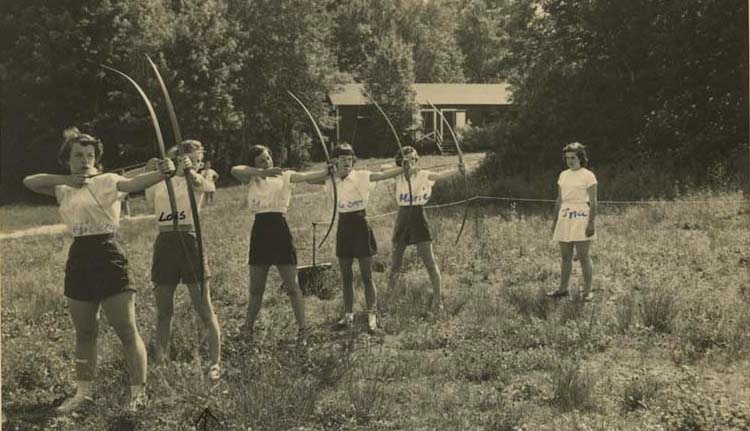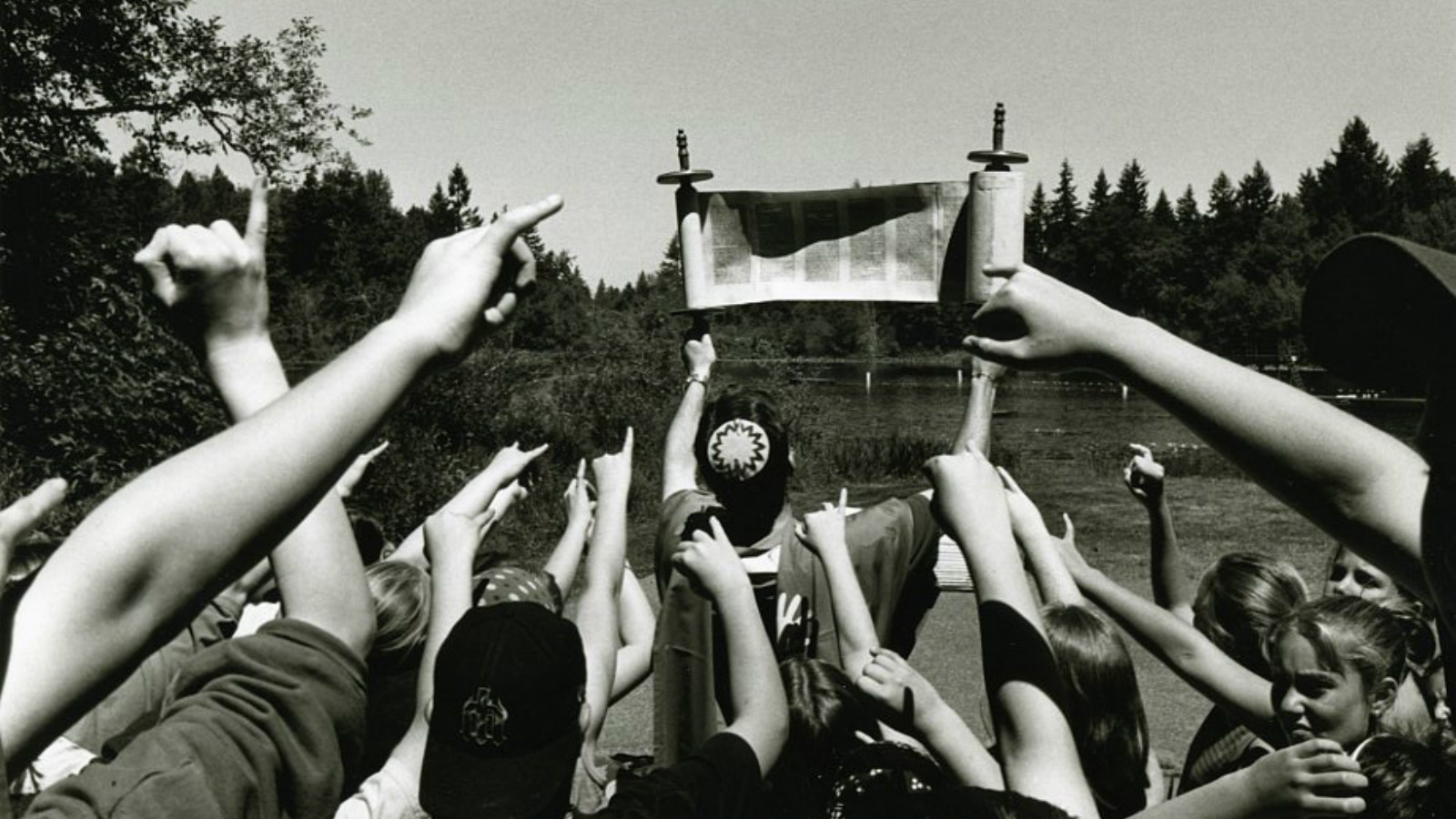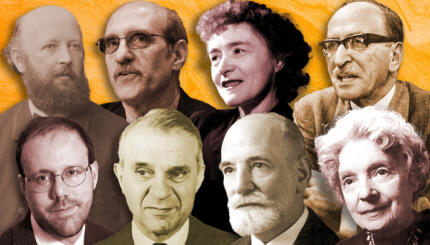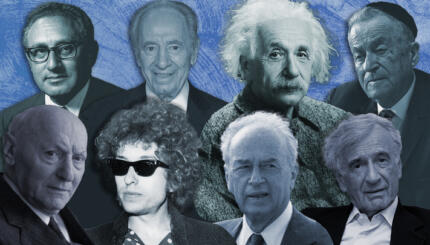Thirteen-year-old Becky Goldberg’s summer was filled with magic: glittering sunshine on sparkling lakes, capsized canoes and children rappelling like spiders down rocky cliffs. By the time her four weeks at Jewish sleep-away camp were over, Goldberg felt like a link in a giant chain. “I had a ton of best friends from all over the United States,” she said. Excitement beamed from her voice.
Goldberg, a fifth-year camper at Olin-Sang-Ruby Union Institute in Oconomowoc, Wis., the Reform movement’s first camp in America, is one of about 62,000 Jewish children who attended a Jewish camp last summer.
A Place of Our Own: The Rise of Reform Jewish Camping, edited by Michael M. Lorge and Gary P. Zola (University of Alabama Press), is a new book of scholarly essays that raises the questions: Where did Jewish camping come from? And where is it going? The book is a history featuring twists, turns, asides, footnotes, and cool trivia, like the fact that the first known Jewish camp was, of all things, a girl’s camp, founded in 1893 by the Jewish Working Girls Vacation Society, located in New York. But in a nutshell, the history goes like this:
Turn of the Century
The first Jewish camps sprouted up amid the larger organized camping movement in America, led by 19th-century social reformers seeking to give a reprieve to children living in the squalid conditions of industrializing cities. These fresh-air programs blended spiritual, educational, and recreational components. By the mid-1920s, hundreds of camps had opened in forested, lakeshore spots around the United States.
READ: Here’s How Jewish Summer Camps Welcome Their Youngest Charges
READ: These Jewish Summer Camps Are Proud to Be Basic
The early Jewish camps were motivated by two concepts: Bring inner-city kids out to the country, and “Americanize” the children of Eastern European immigrants. What made these camps Jewish was their demographics, not their programming. Their campers were Jewish, and the camps were run under Jewish auspices.
Acculturation at Camp

But beginning in the 1920s and through the ’30s, ’40s and ’50s, a trend emerged that ran counter to the emphasis on acculturation at many Jewish camps: the growth of camps with consciously Jewish cultural and educational missions. Among the first were the Cejwin Camps in Port Jervis, N.Y., which were founded by the Central Jewish Institute, an independent Jewish community center on Manhattan’s Upper East Side, and Camp Boiberik, a Yiddish camp near Rhinebeck, N.Y.
READ: Finally, Jewish Camp for Adults
In addition to Yiddish camps, camps with Zionist, Hebrew and socialist identities came into existence. While sporting different cultural and ideological missions, they all offered in common Jewish experiences inextricably linked to the pleasures of friendships forged in outdoor summer fun.
Enter Denominations

The 1940s saw great growth — and a shift. According to Jerry Silverman, former president of the Foundation for Jewish Camping, Conservative movement leaders — with Reform leaders quickly following — began looking for ways to develop future leaders. That was the start of the movement of Camp Ramah — the camping arm of Conservative Judaism — and the rise of denominational camps.
In an essay in Lorge and Zola’s book, Brandeis University professor Jonathan Sarna explains that before 1940, about two-thirds of all new Jewish camps were either philanthropic or community based. From 1940 to 1960, that number dropped to less than a quarter, while 40% had explicit educational and religious missions.
Many of these camps initially provided transformative experimental and experiential religious programs for teenagers. By the mid-1950s, however, the denominational camps were extending their programs to younger children in efforts not only to “transform” but also to “mold.”
Ninety new Jewish camps opened during the 1960s, but then growth stopped abruptly. “There was stagnation of new camps from the late 1960s to the early 1970s until the mid-1990s,” Silverman said. There are no clear explanations for these trends. Some speculate that the stagnation was related to the push to build congregations and day schools, and that the subsequent new growth is related to the redirection of resources to Jewish summer camping after studies suggested that camps are good investments for the Jewish future because they are effective at making Jewishness “stick” to kids.
View from the Present
The new century has brought a boomlet of camps west of the Mississippi, following the westward migration of many Jewish families. Today, “there are Jewish camps for everyone, for every diverse kind of Jewish family you can think of: interfaith, gay couples, couples of color. Some focus on sports, some are Orthodox; the Reconstructionist movement just opened a camp this past summer,” Silverman said.
Hopes are high among enthusiasts that Jewish camping is poised for a new renaissance. “We feel there’s going to be an inordinate amount of opportunity and new programs opening in the next five years,” Silverman said. “We want 150,000 kids going to Jewish camp. We believe the Jewish community will look different in 15 to 20 years if they do.”
What is it about Jewish camps that make them so successful at instilling in children Jewish identities so deep that they last a lifetime? “Each camp has a very strong and intentional culture, camp by camp. Camp’s power to socialize young Jews–How do I be a Jew? How do I be a member of the Jewish community?–depends on this culture,” said Amy L. Sales, co-author with Leonard Saxe of How Goodly Are Thy Tents: Summer Camps as Jewish Socializing Experiences (Brandeis University Press, 2003). Culture encompasses everything, from how the Sabbath is observed to never deviating from grilled cheese on Mondays.
Becky Goldberg, meanwhile, knows exactly what she’s doing the summer she enters 10th grade. That’s when she’ll be eligible for her camp’s Hebrew-immersion program. “We kids planned to be together,” she said.
Reprinted from The Forward with the author’s permission.
To learn more about Jewish summer camp options in North America, visit the Foundation for Jewish Camp’s website.



